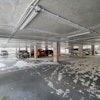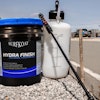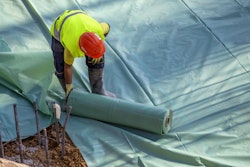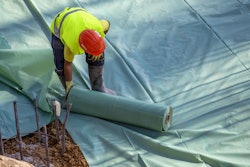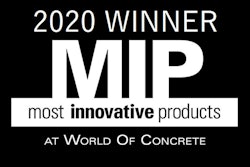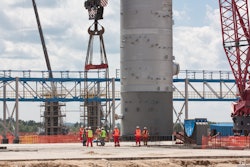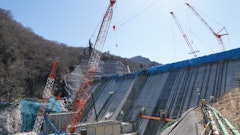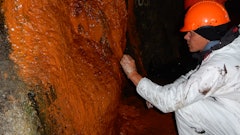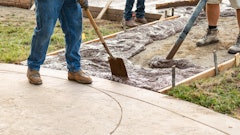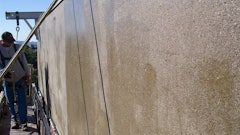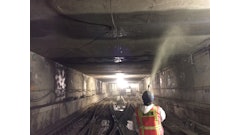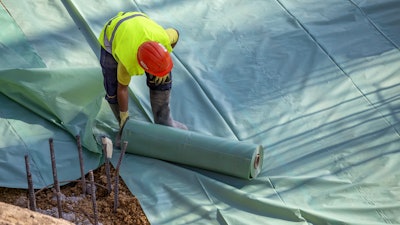
With the increasing demand for residential and commercial spaces, developers are turning to former industrial sites with known subsurface environmental impacts that have the potential to cause great bodily harm over time. For example, a former industrial site in Southern California was chosen for redevelopment into a federally funded public site, but historical operations had left behind petroleum hydrocarbons and volatile organic compounds (VOCs) which can cause adverse health effects in humans.
Ideally, hazardous materials such as these are removed prior to construction, but sometimes that is either physically or economically infeasible. Under those circumstances, it is of utmost importance that the issue of vapor intrusion is addressed in order to protect the health and safety of building occupants.
When contaminant vapors enter occupied spaces, it can result in a wide range of negative health effects: Office workers complaining of frequent headaches; residents suffering from mysterious respiratory illnesses; clusters of cancer in school children; and the list goes on.
In 2019, residents of Martinsville, Ind. became aware of a perchloroethylene (PCE) plume underneath a significant portion of their town, and wondered if it could be responsible for the clusters of rare forms of cancer that had been affecting both adults and children. The potential source was a former drycleaner that operated for five years in the late ‘80s and early ‘90s which had received multiple complaints about illegal dumping and mishandling of waste drums.
PCE is classified by the EPA as a likely carcinogen to humans by all routes of exposure. To find out how much the PCE was affecting the local community, a research team collected samples from the homes of 20 volunteers, including tap water, air and breath samples to measure internal exposure. PCE was found in 100 percent of the tap water samples and 60 percent of indoor air samples. More distressingly, 100 percent of the 39 exhaled breath samples tested positive for PCE.
While the PCE plume in Martinsville is currently being addressed using in-situ treatment techniques, a vapor intrusion mitigation strategy must also be formulated in order to prevent further harm to human health.
The story in Martinsville is not uncommon. A compilation of indoor air quality studies, including thousands of indoor air samples culled from data collected over a span of four and a half decades from 1970 to 2005, was reviewed, evaluated and analyzed for over 40 VOCs. The review found compounds of concern in more than 50% of the samples, pointing to the endemic nature of vapor intrusion.
Whether it is through cracks in the floor slab, utility conduits or directly through concrete pores, vapors can enter buildings through a variety of pathways. Once inside, even low concentrations can create a number of adverse short-term and long-term health effects, ranging from nausea (short-term) to cancer causing illnesses (long-term). In order to prevent harm to human health, it is necessary to find a way to keep vapors out of occupied spaces.
Vapor barrier systems are commonly used to prevent airborne contaminants from entering an occupied space and protect human health. However, many vapor intrusion barriers were adopted from the waterproofing industry and retrofitted as vapor barriers typically involving plastic sheeting sealed with a generic spray-applied asphalt latex core.
Looking to improve upon existing barrier technologies, scientists, spent years conducting extensive scientific research and development, resulting in an innovative new suite of barrier systems designed specifically for vapor intrusion mitigation.
Historically constructed of polyethylene, polypropylene or geotextiles, the base layer for modern barrier systems needed an update to increase the level of protection it provided. Knowing that aluminum is very effective at stopping the permeation of volatile organic compounds, researchers developed a base layer with aluminum sheeting sandwiched between flexible polyethylene—resulting in a barrier component with 100 times greater chemical resistance than comparable HDPE (high density polyethylene) and increased durability to help it retain its structural integrity both during and after installation.
While the base layer protects the bulk of the building footprint, vapors often enter through seams in the sheeting and penetrations through the membrane (i.e. openings for utilities). At these weak points, the latex core becomes the primary line of defense against vapor intrusion so, it too, needed an upgrade.
To create a better latex core, researchers looked to replace the styrene-butadiene rubber (SBR) traditionally used in waterproofing barriers due to its hydrophobic properties. Understanding that the asphalt latex core had the unfortunate tendency to absorb solvents and hydrocarbons, concentrating them until eventual breakthrough, the team of scientists identified nitrile as a key ingredient to provide a demonstrated improvement over SBR.
Selecting nitrile, a key component of the protective blue gloves used in many professions that often come into contact with solvents and hydrocarbons differentiates this new suite of vapor barrier systems from any other passive barrier solutions on the market today. Studies have shown that the nitrile-advanced asphalt latex core can reduce the entry of solvent vapors (TCE) into occupied spaces by a factor of ten.
 Land Science, a division of REGENESIS
Land Science, a division of REGENESIS
As development continues on land with known environmental contamination, it is increasingly important to find ways to mitigate vapor intrusion to prevent negative health effects. Researchers have found ways to upgrade existing vapor barrier technology, adding components such as nitrile and aluminum to create barriers with vastly improved chemical resistance. With these latest innovations, the state-of-the-art in vapor intrusion mitigation technology has once again been advanced, giving environmental professionals new tools with which to keep unwanted vapors out and to keep people, like the residents of Martinsville, safe.
 Land Science, a division of REGENESIS
Land Science, a division of REGENESIS

